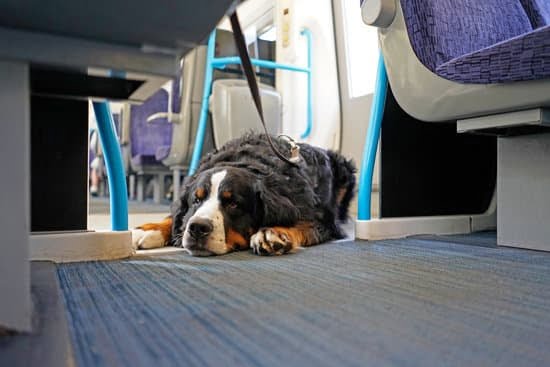Introduction/Overview
Yes, it is possible to get pre-trained service dogs. Pre-trained service dogs are intelligent, loyal animals that have been professionally trained to provide physical & emotional support and aid for those who need it. Benefits of having a pre-trained service dog include improved confidence and independence, as well as a quicker integration into the household without the need for extensive training. Pre-trained service dogs can assist with a range of tasks ranging from help with accessibility needs such as getting something off a high shelf or opening doors to providing comfort during panic attacks or meltdowns. Not only do these dogs enable individuals to regain their autonomy by performing various tasks, but their comforting presence often makes them trusted companions and helps with associated mental health challenges like depression and anxiety. Aside from specifically designated tasks, having a pre-trained service dog can enhance one’s quality of life by increasing an individual’s daily social interactions through meeting new people and promoting connections with others in the community or at work.
Different Types of Pre-Trained Service Dogs
Yes, it is possible to get pre-trained service dogs. Depending on the type of service a person needs, there are several types of pre-trained service dogs available. Some of the most common types include:
• Emotional Support Dogs: These service animals are trained to provide comfort and support for individuals with mental or emotional disabilities such as PTSD, depression or anxiety. They can help by providing physical contact and companionship and serve as an anchor in times of stress.
• Therapy Dogs: These dogs are usually large breeds (Golden Retriever, Labrador Retriever, German Shepherd) and have specialized tasks including interacting with children in hospitals or schools. They must be friendly and well behaved to be successful and must pass specific temperaments tests before they can become certified therapy dogs.
• Guide Dogs: These specially trained dogs help individuals who have impaired vision navigate around obstacles safely by leading them to desired locations.
• Hearing Dogs: These talented animals are trained to alert their owners when specific sounds occur such as doorbells, telephones ringing, alarms going off and even baby cries at night. They may also respond to verbal requests such as “dinner” or “bathroom” by leading their owners in the right direction.
• Mobility Assistance Dogs: These versatile canine helpers assists people with mobility issues by performing myriad activities such as opening doors and drawers, helping someone stand from a seated position or even tugging wheelchairs up a ramp into a building.
Requirements for Obtaining a Pre-Trained Service Dog
Yes, pre-trained service dogs can be purchased. Pre-trained service dogs are those that have already been trained in basic obedience, handicap assistance and socialization. The requirements for obtaining a pre-trained service dog vary depending on the organization providing the dog. Generally, potential owners must be able to demonstrate a physical disability and must complete an application process which includes submitting documentation of the disability as well as signing documentation affirming that they understand their responsibilities as an owner.
In addition to the paperwork required to obtain a pre-trained service dog, potential owners should also research different organizations and trainers to find one with experience in providing quality animals for this purpose. It is important to make sure that any pre-trained service dog you purchase is licensed and insured by the organization providing it. Furthermore, prior to purchasing from any organization you should make sure that their services include an extensive training curriculum so you can ensure your dog will receive the best care and training possible. Finally, it is important that you discuss expectations thoroughly with the chosen provider so both parties have an understanding of what will be expected from them during your relationship with your new four-legged companion.
Advantages and Disadvantages of Pre-Trained Service Dogs
Advantages of Pre-Trained Service Dogs:
• Pre-trained service dogs can provide a faster solution to receiving help since they are already trained in specific commands and tasks to help with disabilities.
• Pre-trained service dogs can also provide an emotional connection for their owner as the bond between them is often established before coming into the new home. This can reduce stress and make the transition easier.
• The owners of pre-trained service dogs don’t have to worry about the time, money, and effort required to train a service dog from scratch.
Disadvantages of Pre-Trained Service Dogs:
• The costs associated with obtaining a pre-trained service dog can be significantly more than one obtained through traditional training.
• As pre-trainers may not be personally acquainted with their clients, they may not be able to tailor the commands and tasks perfectly to each individual’s needs.
• Not all pre-trained service dogs meet standards set by disability organizations or governing laws which might exclude them from being taken into public places or providing legal protection for their owners in certain situations.
The Steps to Getting and Caring for a Pre-Trained Service Dog
1.Research – Whether you are interested in a pre-trained service dog or you’re more inclined to train one yourself, it’s vital that you research the process thoroughly and understand what is involved with owning and caring for a service dog. Consider your lifestyle and how much time, money, and energy you are able to dedicate to this responsibility.
2.Selection – Once you know you’re ready to have a service dog companion, consider the various organizations that provide pre-trained dogs to people with disabilities. When selecting an organization, look at their accreditation status, reviews from other owners, and ask questions about their processes and standards for pre-training.
3.Evaluation – Before being matched with a pre-trained service dog, you may be asked to fill out surveys or complete assessments regarding your needs and expectations as an owner. This information is used by the organization to find the most suitable match between potential owner and animal partner.
4.Matching & Training – During the matching process, preference is given to those who promise a lifelong commitment for their new animal companion—meaning that euthanasia should not be considered as an end of life option for any service animal in need of a home. In most cases, organizations screen each potential pet parent prior to handing over a trained dog; some will arrange in-person meetings as part of the reviewing process before granting ownership rights..
5.Routine Care – After obtaining ownership of your pre-trained servant canine companion, it’s important that he or she receives routine care such as vet visits (for vaccinations, health checks), regular grooming (to maintain coat condition), proper nutrition (ideally using species appropriate food) and adequate exercise (physical activities).
6 Ongoing Training & Support – Your service animal may require additional training during their lifetime depending on changing disability needs or changes in home environment. Similarly your pet requires ongoing mental stimulation through positive reinforcement play activities or distraction techniques during times when managing boredom may be challenging for them so they don’t resort back into any unwanted behaviors trying to entertain themselves.. It’s also beneficial for both owner and pet if regular access is provided to education support services such as reputable behavior consultations/ trainers if required throughout the course of ownership.
Tips on Training a Pre-Trained Service Dog
1. Use Positive Reinforcement: Training a pre-trained service dog requires working with positive reinforcement. Use rewards such as treats, verbal praise and meaningful physical contact (e.g., petting) to motivate the dog for desired behaviors. Try to keep the rewards consistent and short in duration so that the dog does not become desensitized to them.
2. Encourage Good Behavior: Make sure you consistently encourage your new service dog for good behavior, even if it’s just following a simple command or struggling through a difficult task. Take time to lavish them with praise so they can feel rewarded and begin understanding what specific behaviors are required of them in different situations. Also, refrain from punishing your service dog; instead focus on giving them positive reinforcement as a reward for completing tasks correctly.
3. Provide Socialization Opportunities: A pre-trained service dog can quickly get overwhelmed in usual social settings; thus provide additional socialization opportunities away from home where they can safely explore the environment at their own pace (e.g., parks). During this process, you can also introduce basic rules like no barking or biting which will help promote calmness and well-behaved behavior once inside familiar surroundings again.
4. Set Clear Boundaries: Setting clear boundaries is critical to ensure that your service dog’s behavior does not start slipping as time goes on; meaning specify what kind of actions you do/do not allow when out in public or inside your house respectively. For example, let your new pooch know that you expect him/her to stay behind an invisible boundary which could be marked by surrounding cars/almost anything really when crossing streets; sending clear signals as soon as possible will help enforce expectations early on rather than eliminating undesirable habits later on down the road once formed.
Common Myths About Pre-Trained Service Dogs
Yes, it is possible to get pre-trained service dogs. Typically, a knowledgeable and reliable trainer should be sought out in order to ensure a good fit for the canine and recipient of their services. Although the process of finding and adopting an already trained service dog can be time consuming and costly, the individual payoff is worth the effort.
Unfortunately there are some myths about pre-trained service dogs that make people question if truly going through this process can lead to successful placement of a canine as a service animal. Some common misconceptions include believing that only puppies can adequately learn complex tasks or that commercial programs are more capable than independent trainers of providing excellent results. Additionally, there is also an often held belief that pre-trained service dogs must complete additional certifications in order to fulfill their predefined responsibilities.
On the contrary, adult dogs commonly undergo incredibly comprehensive training programs under experienced professionals; these preparations often include external verification where necessary to prove excellence—without needing further qualifications post adoption. Ultimately, when paired with suitable individuals who are willing to continue righting wrongs and reinforcing learned behaviors, pre-trained service animals can be successfully acquired via multiple channels depending on personal requirements and particular circumstances.
Concluding Remarks
Service dogs can be incredibly helpful for people with disabilities and/or illnesses. Pre-trained service dogs are already trained to help individuals in various ways and are available from organizations that specialize in providing assistance dogs. Depending on the organization, these pre-trained service dogs can be expensive and have waiting lists. Still, getting a pre-trained service dog is much quicker than training one yourself or attending a specialized training program for assistance dogs. Ultimately, when choosing to get a service dog, you should consider all your options carefully within your budget before making this commitment.

Welcome to the blog! I am a professional dog trainer and have been working with dogs for many years. In this blog, I will be discussing various topics related to dog training, including tips, tricks, and advice. I hope you find this information helpful and informative. Thanks for reading!





